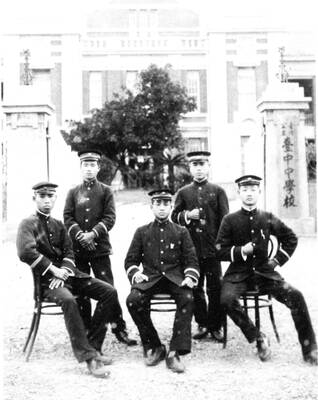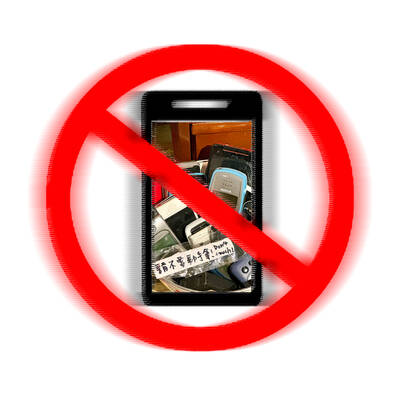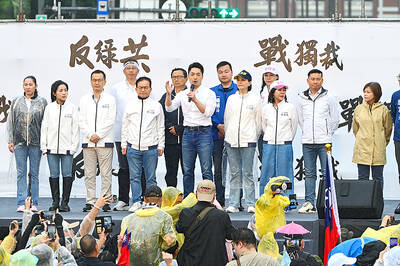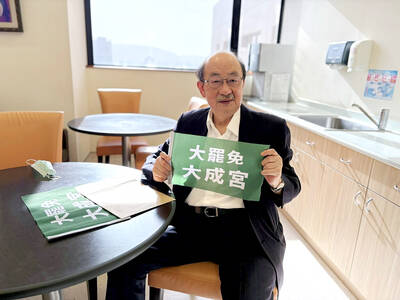Rumors of secret maps, symbols carved in rocks and booby-trapped underground chambers filled with looted gold have lured treasure hunters to the Philippines for decades.
They are drawn by a legend that Japanese occupying forces stashed away billions of dollars' worth of bullion and precious artefacts looted from across Asia when they realized their empire was collapsing in 1945.
In a tale filled with rumors of cover-ups and conspiracy, treasure hunters claim that US forces spirited away much of the horde after the war and that billions of dollars' worth of loot remain unaccounted for.
For many, though, the Yamashita treasure, named after the wartime military governor of the archipelago,
General Tomoyuki Yamashita, is nothing more than a fable with no evidence to back up the booty hunters' outlandish claims.
Today, armed with a pruning hook, Nicanor Brun guards the general's memorial stone from weeds and tomb raiders. The shrine lies on the lower slopes of a mountain, surrounded by an orchard beside a mountain brook.
Brun says his late mother told him Yamashita was strung up from a branch of an old mango tree at the site on the lower slopes of Mount Makiling south of Manila in early 1946.
"There are a lot of diggings around," says the 47 year-old grandson of an anti-Japanese resistance fighter.
`Tiger of malaya'
He says there have been several excavations in the area, including at the base of a waterfall called Dampalit where residents say treasure hunters reco-
vered stones with Japanese characters inscribed on them.
According to legend, after defeating British forces in Malaya and Singapore, where he earned himself the moniker the "Tiger of Malaya," Yamashita looted 12 countries in East and South-East Asia and shipped the booty to the
Philippines.
Six decades after the Japanese surrender, Internet chatrooms are alive with tales of networks of tunnels and chambers filled with gold and protected by booby-traps, pressure mines and trip wires laid by Japanese engineers.
"One of our companions died in a poison trap, fortunately he was able to bring home two bars of gold," writes one treasure hunter.
"We know the site but our problem is how to get our hands on the treasure without getting poisoned. The site is within a poisoned waterfall."
Others write of buying up plots of land in areas where Japanese troops were stationed or made their last stand against US troops. They say the sites are dotted with markings such as hearts, arrows and pyramids carved into rocks.
One describes "three big rocks one meter below the ground with a mark on top, a hand-painted square with a dot at its centre, the number six and a key."
"My friends found a huge arrow pointing to the river. The river floor was checked and they discovered a man-made tunnel," writes another.
"What they discovered was a big seven-foot high engraved heart shape with a curved tail on the tunnel wall. In the middle of the engraved heart was a deep hole large enough for the whole arm to insert in.
"Do you think it is a Japanese treasure site?"
Another rumor claims that the same sappers who designed the warrens deep underground were buried alive with the treasure by their commanders setting off explosive charges to ensure that the locations be kept secret.
An even darker side of the story has it that the stashes were cursed by the Japanese and dotted with decapitated heads, while tales abound of treasure hunters dying or disappearing in mysterious circumstances.
By and large, however, experts give little credence to the stories.
Nothing found
"Despite all the treasure hunters, their maps, oral testimony and sophisticated metal detectors, nobody has found a thing," says Ambeth Ocampo, chairman of the Philippine government's National Historical Institute.
Since the existence of the treasure has never been proven, theories of what it likely contains range from lines of gold bullion piled meters high, of solid gold Buddha statues weighing more than a tonne, of loose diamonds, gold coins and priceless artefacts looted from temples.
One account claims the existence of gems, rare art, such as ancient Chinese scrolls and precious metals, all plundered from Asian treasuries, banks, private homes, art galleries and pawn shops owned by Chinese tycoons, Malay royalty, Buddhist sects, drug lords, and triad gangs.
Unlike art looted by the Nazis in Europe, none of the Yamashita "treasures" has been found, regional governments insist.
"We have heard of people searching for the so-called Yamashita treasure. But we cannot tell if it is true or not," a Japanese foreign ministry spokeswoman said in Tokyo. Other countries are similarly circumspect.
But failure has not deterred the dreamers, who have bored underneath historical sites, Japanese cemeteries, wartime-era military fortifications, government buildings, churches, and even private lots for half a century -- with or without government permits.
Authors Sterling and Peggy Seagrave in their 2003 book Gold Warriors: America's Secret Recovery of Yamashita's Gold allege the US government covertly recovered the booty and used it to bankroll the Cold War.
Secrets to the grave
No Filipino historian takes the claims seriously.
Feeding the rumors are further rumors, of secret maps, of snippets of information given by Japanese soldiers as they went to their deaths.
One theorist alleges that Yamashita's driver was tortured by US agents into revealing treasure sites.
Another suggests that General Douglas Macarthur, who commanded US forces in East Asia and went on to accept Japan's surrender, ordered Yamashita's trial and execution to keep him quiet.
"It's become something like an urban legend-type story," said University of the Philippines professor Rico Jose, a local authority on the Japanese period in the Philippines.

April 28 to May 4 During the Japanese colonial era, a city’s “first” high school typically served Japanese students, while Taiwanese attended the “second” high school. Only in Taichung was this reversed. That’s because when Taichung First High School opened its doors on May 1, 1915 to serve Taiwanese students who were previously barred from secondary education, it was the only high school in town. Former principal Hideo Azukisawa threatened to quit when the government in 1922 attempted to transfer the “first” designation to a new local high school for Japanese students, leading to this unusual situation. Prior to the Taichung First

The Ministry of Education last month proposed a nationwide ban on mobile devices in schools, aiming to curb concerns over student phone addiction. Under the revised regulation, which will take effect in August, teachers and schools will be required to collect mobile devices — including phones, laptops and wearables devices — for safekeeping during school hours, unless they are being used for educational purposes. For Chang Fong-ching (張鳳琴), the ban will have a positive impact. “It’s a good move,” says the professor in the department of

On April 17, Chinese Nationalist Party (KMT) Chairman Eric Chu (朱立倫) launched a bold campaign to revive and revitalize the KMT base by calling for an impromptu rally at the Taipei prosecutor’s offices to protest recent arrests of KMT recall campaigners over allegations of forgery and fraud involving signatures of dead voters. The protest had no time to apply for permits and was illegal, but that played into the sense of opposition grievance at alleged weaponization of the judiciary by the Democratic Progressive Party (DPP) to “annihilate” the opposition parties. Blamed for faltering recall campaigns and faced with a KMT chair

Article 2 of the Additional Articles of the Constitution of the Republic of China (中華民國憲法增修條文) stipulates that upon a vote of no confidence in the premier, the president can dissolve the legislature within 10 days. If the legislature is dissolved, a new legislative election must be held within 60 days, and the legislators’ terms will then be reckoned from that election. Two weeks ago Taipei Mayor Chiang Wan-an (蔣萬安) of the Chinese Nationalist Party (KMT) proposed that the legislature hold a vote of no confidence in the premier and dare the president to dissolve the legislature. The legislature is currently controlled